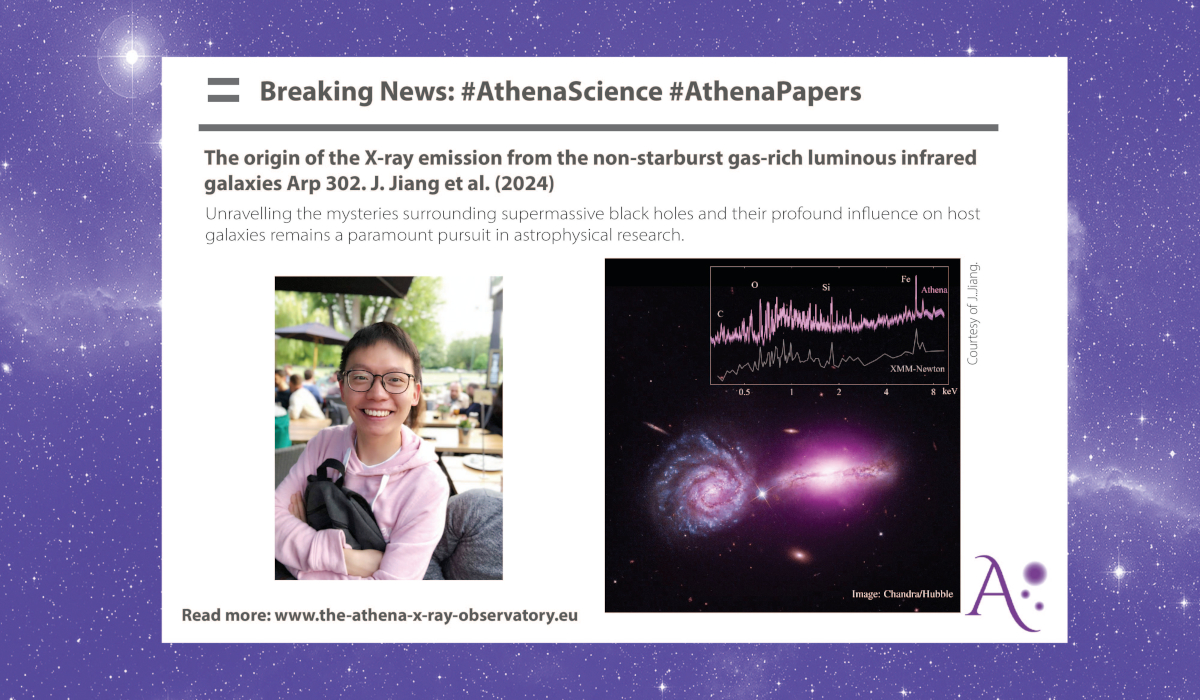
The origin of the X-ray emission from the non-starburst gas-rich luminous infrared galaxies Arp 302

By J. Jiang
Unravelling the mysteries surrounding supermassive black holes and their profound influence on host galaxies remains a paramount pursuit in astrophysical research. Infrared luminous merging galaxies stand out as unparalleled laboratories for delving into this black hole-galaxy relationship. Their enhanced infrared emission comes from an abundance of dust, aglow under the illumination of stars and black hole radiation. The merger of galaxies also channels the inflow of gas and dust into the vicinity of supermassive black holes, establishing a crucial communication link between the host galaxy and the central invisible supermassive beast. Yet, the obscuration created by the surrounding dust and gas presents a challenge in identifying these hidden black holes.
In this study, we focus on Arp 302, infrared luminous merging galaxies positioned 450 million light-years from Earth. Using Chandra (depicted in purple in the image) and XMM-Newton, we find noteworthy extended soft X-ray emissions from the host galaxy. Detecting iron emissions from the circumnuclear environment adds another insight into the region closer to the supermassive black hole. The soft X-ray luminosity not only attests to the ongoing star formation, comparable to the star-forming regions in our Milky Way but also offers a unique perspective through pure spectral fitting, bypassing the need for spatial resolution in the image.
However, certain intricacies still need to be clarified, such as the metallicity of the star-forming region, which is crucial for unravelling its growth history. Looking ahead, the future holds promise with the advent of Athena, poised to review many emission lines in the X-ray spectrum (depicted in the pink spectrum), surpassing the capabilities of XMM-Newton (described in the grey spectrum). From iron emissions closest to the supermassive black hole to carbon emissions originating from the star-forming region within the host galaxy, Athena's capabilities are set to propel our understanding of these energetic phenomena to unprecedented heights.

